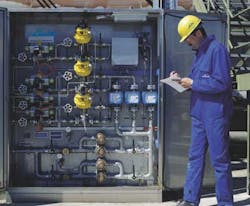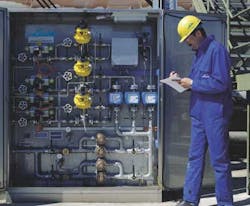A major petrochemical facilty in South Korea was unable to meet the future demand for dissolved oxygen in the secondary wastewater treatment stage. Darren Gurney explains how an oxygenation process provided the solution.
Chemical production plants are under mounting pressure to process ever larger quantities of wastewater to increasingly higher standards while also needing to operate under various regimes of cost constraint. Plant operators face the dilemma of how to maintain treatment throughput at reasonable cost even when the plant reaches design capacity. The challenge can be compounded by potential changes to production mixes, which often call for additional investment.
Often the prohibitively high costs of building additional plant capacity to meet the competing demands of throughput and changing production mix can, in many cases, be largely mitigated by introducing the latest wastewater technology.
Production increase in South Korea
LG Chemicals in South Korea manufactures a wide range of products, from petrochemicals to high-value added intermediates and high performance industrial materials. When the opportunity arose to increase production capacity at LG Chemicals, the existing air based plant was judged to be unable to meet the future demand for dissolved oxygen in the bioreactors comprising the secondary treatment stage.
Without an effective intervention, this part of the process would have deteriorated, resulting in a potential drop-off in performance, exposing the company to potential regulatory penalties for possible environmental infringements and having an adverse affect of the downstream Fenton's Reagents tertiary stage.
LG Chemicals' plant challenges included high-salinity wastewater and operation at elevated temperatures in the secondary treatment stage - recorded as high as 48 degrees Celsius. Another stipulation of the upgrade programme was that all equipment must be installed without interfering with the current plant operation.
Linde Gases was approached to propose solutions to increase the oxygenation capacity of LG Chemical's existing wastewater treatment plant. The company advocated its proprietary SOLVOX®-V process, which is suitable for oxygen dissolution into basins with low water depths, would increase the dissolved oxygen in the secondary treatment stage. In basic terms, the units consist of submersible pumps with a very high hydraulic efficiency factor, a distributor for the division of water with low oxygen content into separate streams, gas/liquid contact venturi pipes for oxygen transfer in the form of very fine bubbles plus mixing nozzles for the even distribution and dispersion of oxygen-enriched water.
High velocity jets generated at the outlet of the SOLVOX unit provide re-circulation of the oxygenated wastewater at the bottom of the basin to ensure an ideal rate of oxygen utilisation and efficiency is continuously achieved. The injection of oxygen is automatically controlled by a signal from an installed dissolved oxygen probe via a transmitter located locally to each aeration basin.
The performance of biological wastewater treatment for industrial wastewater is generally further enhanced through operating a secondary treatment stage at dissolved oxygen levels above 2 mg/l. This is possible due to the high driving force of pure oxygen and efficient oxygen transfer. The process combines oxygen usage and high oxygenation efficiency rates, together with intensive wastewater agitation.
Challenging operating environment
At LG Chemicals it was vital to ensure the equipment would be suitable for the highly saline, high temperature operating environment and this was achieved this by harnessing a nano-particle, ceramic-based coating and using sacrificial zinc anodes. A frame was also constructed that allowed for the lowering of the equipment into the wastewater without damaging the existing aeration tubes and facilitating withdrawal for planned maintenance.
Performance testing confirmed that the process was working optimally and almost immediately LG Chemicals experienced a plant performance improvement in dissolved oxygen. It was possible to reduce the existing aeration system by more than 40% and still achieve the desired operation for the secondary treatment stage.
Linde's intervention focused on the biological treatment phase, removing up to 70% of the pollution load, measured as Chemical Oxygen Demand (COD), after which the wastewater at LG Chemicals passes through several more stages of treatment, most notably a Fenton's Reagent tertiary stage. Improving on this secondary treatment stage reduces the work required for the downstream processes, as well as the total cost of treatment.
The system implemented at LG Chemicals achieved the required outcome without the need to physically build any extra volume capacity onto the plant. The controlled input of pure oxygen can help to the overall performance of wastewater treatment plants and offers fast, flexible and efficient solutions for the biological treatment of wastewater.
Author's note: Darren Gurney is senior process engineer, water & aquaculture, Linde Gases Division.




